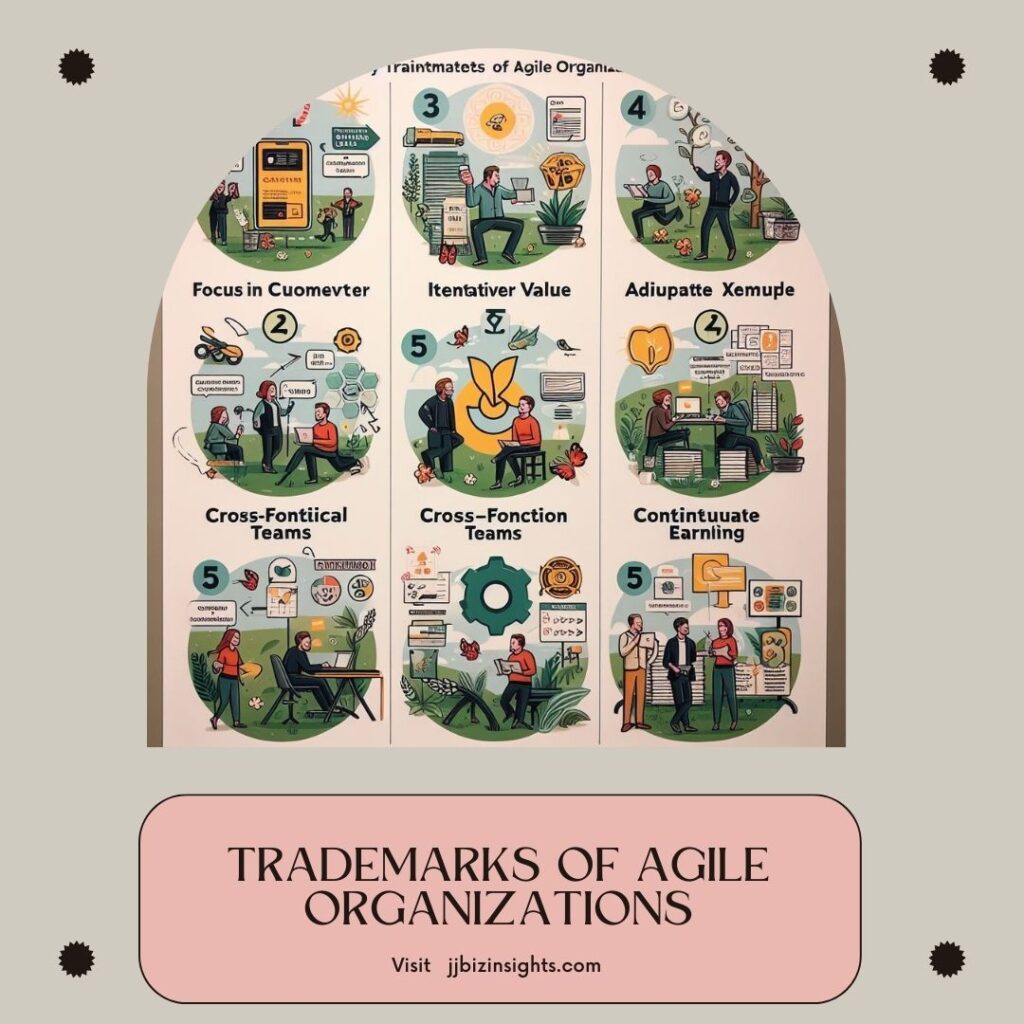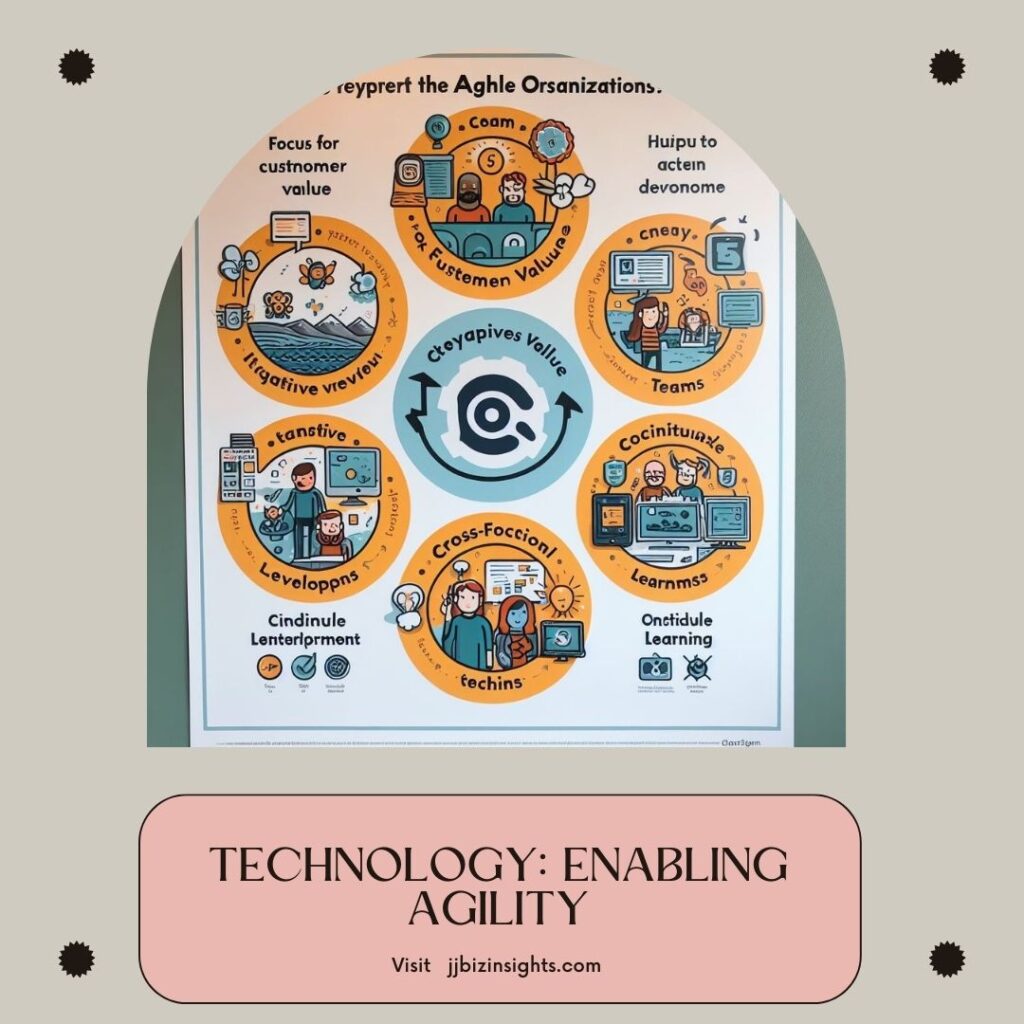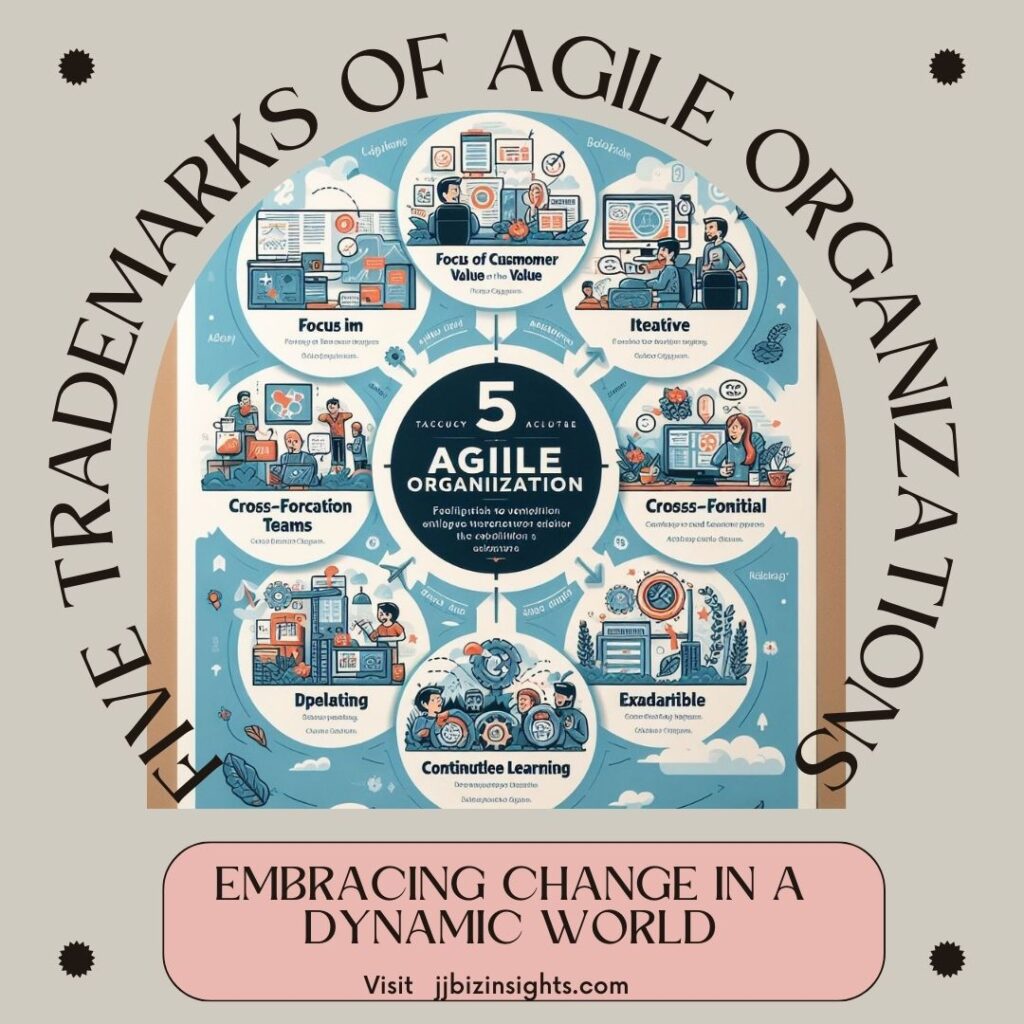The Five Trademarks of Agile Organizations: Embracing Change in a Dynamic World. Do you feel your organization is struggling to keep up with the rapid pace of change in today’s world? In an era of constant disruption and digital transformation, agility is no longer a luxury – it’s a necessity for survival.
Agile organizations are those that can adapt quickly, innovate constantly, and seize unforeseen opportunities. They are characterized by specific trademarks that set them apart from traditional, rigid structures.
This blog post will delve into the five key trademarks of agile organizations, highlighting their importance and how to incorporate them into your own business.
1. Strategy: Shared Purpose and Vision (Trademarks of Agile Organizations)
At the heart of any successful organization lies a clear and shared vision. Agile organizations take this a step further by fostering a common purpose that resonates with everyone, from the CEO to the frontline employee. This shared purpose acts as a guiding north star, motivating individuals and aligning efforts towards achieving a common goal.
Key elements of a strong strategic foundation include:
- Shared Purpose: Everyone understands the “why” behind the organization’s existence and its impact on the world.
- Vision: A compelling picture of the future that inspires and guides decision-making.
- Sensing and Seizing Opportunities: Agile organizations are constantly scanning the environment for emerging trends and adapting their strategy accordingly.
- Flexible Resource Allocation: Resources are allocated dynamically, based on the current strategic priorities.
By emphasizing these elements, agile organizations ensure their strategy remains relevant, adaptable, and future-proof in a dynamic world.
2. Structure: Clear, Flat, and Accountable (Trademarks of Agile Organizations)

Traditional hierarchical structures often slow down decision-making and hinder collaboration. Agile organization embraces a flatter structure, minimizing hierarchies and promoting faster communication and collaboration.
Here are some key features of a flexible and accountable structure in agile organizations:
- Clear, Flat Structure: Streamlined hierarchies enable faster communication and decision-making.
- Clear Accountable Roles: Everyone understands their responsibilities and how they contribute to the organization’s goals.
- Hands-On Governance: Leaders actively participate in day-to-day operations, fostering a culture of collaboration and engagement.
- Robust Communities of Practice: Cross-functional teams collaborate and learn from each other, sharing knowledge and expertise.
- Active Partnerships and Ecosystem: Engaging with external partners and ecosystems helps agile organizations enhance innovation and access diverse perspectives.
This decentralized approach empowers individuals, fosters ownership, and creates a more responsive and adaptable organization.
3. Process: Agility in Action
Agile organizations understand that processes should serve their needs, not hinder them. They prioritize efficiency and adaptability in their processes, allowing for rapid iteration and experimentation.
Key process traits of agile organizations include:
- Rapid Iteration and Experimentation: Ideas are tested quickly, lessons are learned from failures, and continuous improvement is prioritized.
- Standardized Ways of Working: Streamlined and consistent processes ensure efficiency and quality.
- Performance Orientation: Data-driven decision-making is facilitated by clear metrics and performance evaluation.
- Information Transparency: Open access to data enables informed choices and improves collaboration.
- Continuous Learning: A culture of learning and improvement is nurtured, allowing the organization to adapt to changing situations.
- Action-Oriented Decision Making: Decisions are made swiftly based on data, insights, and a shared understanding.
By embracing these process trademarks, agile organizations ensure their operations are flexible, efficient, and responsive to changing circumstances.
4. People: The Heart of Agility
While processes and technology play a crucial role, it’s people who ultimately power agility. Agile organizations recognize this and create an environment that empowers individuals and fosters collaboration.
Key aspects related to people in agile organizations include:
- Cohesive Community: Employees feel connected, valued, and work collaboratively towards shared goals.
- Shared and Servant Leadership: Leaders empower others, provide support, and guide teams towards success.
- Entrepreneurial Drive: Employees are encouraged to take ownership, be creative, and innovate.
- Role Mobility: Individuals are encouraged to move across roles, fostering cross-functional expertise and adaptability.
By investing in their people, creating a supportive environment, and empowering individuals to contribute their best, agile organizations unlock their true potential for agility and innovation.
5. Technology: Enabling Agility

In today’s digital world, technology plays a critical role in enabling agility. Agile organizations leverage technology strategically to enhance communication, collaboration, and innovation.
Key considerations regarding technology in agile organizations include:
- Evolving Technology Architecture: The ability to adapt to emerging technologies and integrate them seamlessly is crucial.
- Systems and Tools: Investing in collaboration tools, project management software, and data visualization tools enhances productivity and communication.
- Next-Generation Technology Development and Delivery Practices: Staying on the cutting edge by adopting agile development methodologies, cloud computing, and automation further empowers agility.
By utilizing technology effectively, agile organizations can automate routine tasks, improve data-driven decision making, and foster seamless collaboration across teams and locations.
Conclusion: Embracing the Journey of Agility

Agility is not a destination, but rather a continuous journey. By embracing the five trademarks explored in this blog post, organizations can build a foundation for adaptability, innovation, and resilience.
Whether you’re a startup or an established enterprise, continuously assess your organization’s strengths and weaknesses, and seek opportunities to incorporate these principles into your operations.
Remember, the ability to adapt and evolve is key to thriving in today’s dynamic business landscape.
References:
- McKinsey & Company. “The Five Trademarks of Agile Organizations.”
- Cleverism. “The Five Trademarks of Agile Organizations.”
Transformative Technologies Shaping Our Future: A Dive into the Cutting Edge

